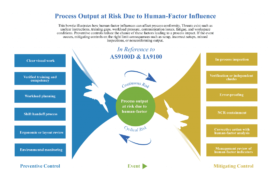As the demand for more energy-efficient and environmentally friendly HVAC+R solutions continues to grow, new cooling technologies are emerging that have the potential to revolutionize the industry. These advancements promise to improve energy efficiency, reduce environmental impact, and offer greater flexibility for both residential and commercial applications.
Magnetic Refrigeration

One groundbreaking technology that’s gaining attention is magnetic refrigeration. This innovative cooling method eliminates the need for traditional refrigerants, which are often harmful to the environment. Instead, it relies on the magnetocaloric effect, where certain materials heat up or cool down when exposed to a magnetic field. By using this effect, magnetic refrigeration can achieve cooling without the use of gases that contribute to global warming.
Magnetic refrigeration is not only eco-friendly, but it’s also highly energy-efficient. Early tests suggest that this technology could use up to 30% less energy compared to conventional refrigeration systems. Although still in development, magnetic refrigeration shows great promise for future HVAC+R systems, especially in areas where reducing environmental impact is a priority.
Thermoacoustic Refrigeration

Another emerging technology is thermoacoustic refrigeration, which leverages sound waves to achieve cooling. In this system, sound waves are used to compress and expand gases, generating heat and cooling without the use of chemical refrigerants. This method is considered highly sustainable and has the potential to be a game changer in industries that require significant cooling power without the environmental drawbacks of traditional systems.
Thermoacoustic refrigeration has already demonstrated potential for industrial applications, but as the technology matures, it could also be adapted for residential and commercial HVAC+R systems. Its ability to reduce reliance on harmful refrigerants and lower energy consumption makes it an exciting prospect for the future.
Solid-State Cooling

Solid-state cooling is another cutting-edge technology that could revolutionize HVAC+R systems. This approach involves the use of semiconductor devices that can transfer heat between different materials when electric currents are applied. Known as thermoelectric cooling, this technology eliminates the need for moving parts and refrigerants, making it highly reliable and environmentally friendly.
Solid-state cooling systems are still in their early stages, but they have the potential to be integrated into compact and energy-efficient HVAC+R systems for both residential and commercial use. These systems offer the added benefit of being quieter than traditional air conditioners, as they don’t rely on compressors or fans.
Challenges and Future Outlook
While these new cooling technologies hold great potential, there are still challenges to overcome before they can be widely adopted. One of the biggest hurdles is cost; many of these systems are still expensive to produce and install. Additionally, the technologies must be proven to be durable and reliable over long periods, especially in extreme climates.
However, as research and development continue, costs are expected to decrease, and performance improvements will make these technologies more accessible to the mainstream market. The push for greener solutions in the HVAC+R industry, driven by both regulations and consumer demand, will likely accelerate the adoption of these new cooling technologies.
Conclusion
The HVAC+R industry is on the brink of transformation as innovative cooling technologies like magnetic refrigeration, thermoacoustic refrigeration, and solid-state cooling continue to advance. These technologies offer the potential for more efficient, eco-friendly systems that can meet the growing demand for sustainable cooling solutions. Although challenges remain, the future of HVAC+R looks promising with the development of these groundbreaking technologies.















